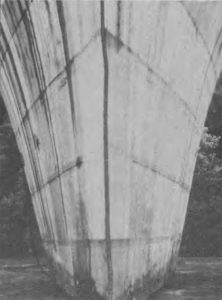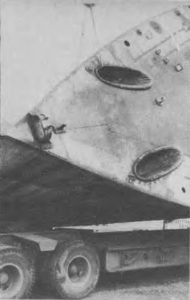- Author
- A.N. Other and NHSA Webmaster
- Subjects
- Ship histories and stories
- Tags
-
- RAN Ships
- HMAS AE1, HMAS Huon I, HMAS Warrego I, HMAS Yarra I, HMAS Swan I, HMAS Torrens I, HMAS Australia I, HMAS Parramatta I
- Publication
- September 1974 edition of the Naval Historical Review (all rights reserved)
Exactly one month after the first attack Parramatta and her consorts entered Rabaul again to cover the landing force of Australian troops. Parramatta was detailed to occupy the small port of Herbertshohe. The destroyer went alongside the jetty and occupied the town without opposition although German troops were seen. The ship’s company took one prisoner in the operation – an Australian blue cattle dog which they promptly named ‘KB’ after a well-known Australian beverage.
When the occupation was complete the destroyers were employed in searching the coastline for enemy shipping known to have escaped from Rabaul. Parramatta was on a patrol with the submarine AE1 when that vessel was lost. In the following two or three weeks the ship captured two enemy vessels, the Meklong and the Brass Monkey.
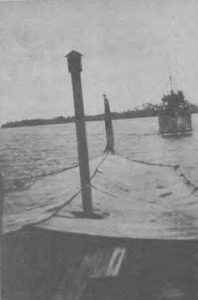
Shortly before leaving the New Guinea area, Parramatta and Warrego carried out a patrol up the Sepik River. They succeeded in penetrating 260 miles from the mouth, a record which still stands for vessels of this size.
For the remainder of 1915 the ship was engaged in patrols on the Australian coast, but early in 1916 the Australian destroyer flotilla joined other British naval forces engaged in contraband patrols in the China and Philippine Seas. In the space of eight months Parramatta boarded more than 40 vessels ranging from sampans to liners. One German prisoner was taken.
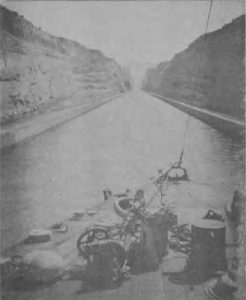
Early in 1917 the Admiralty appealed to the Australian Government for the use of the destroyers in the Mediterranean. German U-boats were playing havoc with Allied shipping in the Adriatic where the Austrian Fleet was still a force to be reckoned with. The request was approved and in September the flotilla, now composed of six vessels – Swan, Huon and Torrens had been completed in Australian shipyards – sailed for Malta.
On October 16 the flotilla was escorting a convoy of French ships between Port Said and Malta when a submarine surfaced off Parramatta’s bows. Commander Warren ordered ‘Prepare to ram’ and the destroyer swung around to where the U-boat had submerged. As Parramatta reached the position the submarine rose again immediately ahead. The destroyer’s bows struck the U-boat amidships and rode over her. Warren ordered a depth charge to be dropped and as the submarine rose in the wake the depth charge exploded against her hull.
There was no depth charge launching equipment fitted at the time. The procedure followed was for one rating to slash the ropes securing charge to the deck, a second hand set the depth setting and a third picked up the charge in his arms and hurled it over the side.

Parramatta and her sister ships operated out of Brindisi on anti-submarine patrols. In November she answered an SOS from the Italian troopship Orione which had been torpedoed by a U-boat. On arrival on the scene Parramatta took the troopship in tow while her sister ships formed a protective screen. The tow had barely begun when a submarine surfaced a hundred yards off the destroyer’s bows. Warren ordered full ahead but with a 12,000 ton vessel in tow Parramatta did not respond. The U-boat escaped.
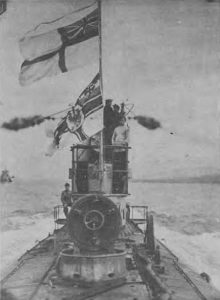
Commander Warren was to die under tragic circumstances at Brindisi. A virulent fever had laid low most of the Australians since their arrival in the Adriatic. Early in April 1918, Warren entered the Naval Hospital at Brindisi for treatment and had recovered when he collapsed whilst taking a walk in the hospital’s grounds. When he was found some time later he was dead. He had drowned in a few inches of water.
Several days after the commander’s death a letter was received in Parramatta announcing the award of the Distinguished Service Order.
Parramatta was present at the Turkish surrender in October of that year. The destroyer anchored off the Sultan’s palace at Istanbul during the ceremony and later in the day received the surrender of officers from the German cruiser Goben.
For the remainder of the year the flotilla was engaged in operations against the Bolsheviks in the Black Sea. Parramatta acted as despatch ship for the British Fleet between Sebastopol and Istanbul.
All six ships were ordered to England for an extended refit in the new year and while on passage Parramatta and Torrens were almost lost in the worst storm to strike the Bay of Biscay. Both ships were disabled and were towed into Spanish ports by tugs. After temporary repairs they proceeded on their voyage and reached England without further mishap.
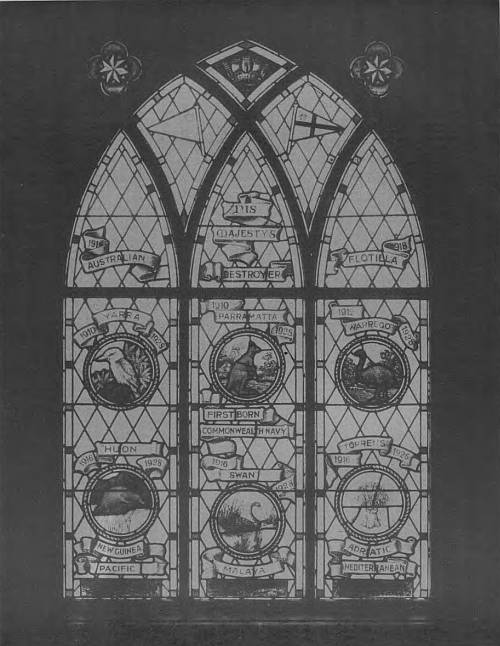
The flotilla returned to Australia in 1919. The remaining nine years of Parramatta’s service career were an anticlimax. She spent a considerable time in reserve or as a training ship. She was commissioned for one week during the Prince of Wales’ visit in 1920 and at one stage was employed as a fire-fighting ship on the Gippsland coast. In 1928 she was finally paid off and earmarked for breaking up. Her career had extended over eighteen years, and according to sailors who served in her in the last years she was still a staunch ship with many years of service left in her.
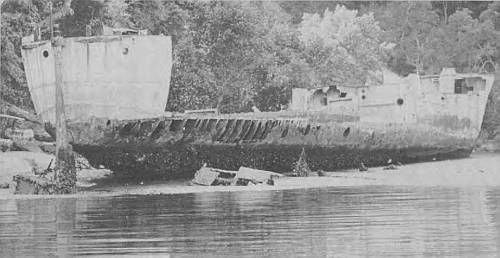

Parramatta onto a barge, 1973.
